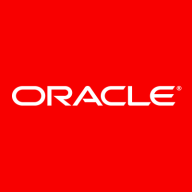

Oracle Data Integrator and SSIS compete in the ETL and data integration tools category. While both have their strengths, SSIS holds the upper hand in ease of use due to its seamless integration with the Microsoft stack and user-friendly interface, which contrasts with ODI’s complexity due to its depth of functionalities.
Features: Oracle Data Integrator offers features like an EL-T approach, allowing complex integration without a separate ETL engine, and re-usable mappings to automate sophisticated data processes. It efficiently handles diverse data technologies, providing real-time data warehousing. In comparison, SSIS excels with its native functions, extensive Microsoft stack compatibility, and flexibility via custom scripting, enabling easy integration with SQL servers.
Room for Improvement: Oracle Data Integrator requires interface improvements, better error handling, and enhanced integration with non-Oracle products to become more user-friendly and less resource-intensive. SSIS, on the other hand, could improve data source compatibility, optimize performance with large data loads, and enhance metadata management. It also lacks inherent ELT capabilities, relying on third-party solutions.
Ease of Deployment and Customer Service: Oracle Data Integrator deployment is complex, involving multi-step setup and significant hardware requirements. Users report mixed customer service experiences, particularly with multi-technology issues. Meanwhile, SSIS enjoys easy deployment within its Microsoft environment, benefiting from familiar SQL Server integration. Its customer support is robust due to Microsoft’s extensive infrastructure, though it may lack specialization in integration challenges.
Pricing and ROI: Oracle Data Integrator is a premium solution with higher costs tied to its Oracle ecosystem reliance, delivering favorable ROI when fully utilized in large implementations. In contrast, SSIS, bundled with SQL Server, is more cost-effective, with no additional charges beyond the SQL Server license. It offers significant value for Microsoft-centric organizations, achieving efficient ROI through its economical integration benefits.
Using SSIS has proven cost-effective as there are no additional fees outside the SQL Server license, and it significantly enhances data management efficiency.
I can get solutions quickly, and any tickets I submit to Oracle are responded to and resolved rapidly.
It processes large volumes of data quickly.
If I use a source system like Oracle and a target system like Teradata, ODI will still run, but it struggles a bit with different infrastructures.
SSIS has a difficult learning curve when dealing with complex transformations.
ODI is cheaper compared to Informatica PowerCenter and IBM DataStage.
Utilizing SSIS involves no extra charges beyond the SQL Server license.
Oracle Data Integrator (ODI) is powerful and strong if my system uses Oracle components for environments like OLTP, enterprise data warehouse, or data marts.
One of the best aspects of SSIS is that it is built into Microsoft SQL Server, so there are no additional costs involved.


Oracle Data Integrator (ODI) is a data integration software solution that provides a unified infrastructure to streamline data and application integration projects. It uses a powerful design approach to data integration, which separates the declarative rules from the implementation details. The solution is based on a unique ELT (Extract Load Transform) architecture, eliminating the need for a standalone ETL server and proprietary engine.
Oracle Data Integrator Features
ODI has many valuable key features. Some of the most useful ones include:
Oracle Data Integrator Benefits
There are many benefits to implementing ODI. Some of the biggest advantages the solution offers include:
Reviews from Real Users
Below are some reviews and helpful feedback written by PeerSpot users currently using the Oracle Data Integrator (ODI) solution.
Brian D., Business Process and Strategy Specialist Advisor at NTTData, says, “The Knowledge Module (KM) is my favorite feature of ODI. This is where I learned how to use variables to make jobs dynamic. I took that knowledge and created a KM that would go into iTunes and pull the sales of eBooks. Making something that is reusable, like a KM, is important to not only reduce build time but also maintenance in the future.”
Ashok S., Applications Support Manager at a marketing services firm, mentions, "The most valuable features of ODI are the ease of development, you can have a template, and you can onboard transfer very quickly. There's a lot of knowledge modules available that we can use. If you want to connect, for example, a Sibyl, SQL, Oracle, or different products, we don't have to develop them from scratch. They are available, but if it's not, we can go into the marketplace and see if there's a connector there. Having the connector available reduces the amount of hard work needed. We only have to put the inputs and outputs. In some of the products, we use there is already integration available for ODI, which is helpful."
SSIS is a versatile tool for data integration tasks like ETL processes, data migration, and real-time data processing. Users appreciate its ease of use, data transformation tools, scheduling capabilities, and extensive connectivity options. It enhances productivity and efficiency within organizations by streamlining data-related processes and improving data quality and consistency.
We monitor all Data Integration reviews to prevent fraudulent reviews and keep review quality high. We do not post reviews by company employees or direct competitors. We validate each review for authenticity via cross-reference with LinkedIn, and personal follow-up with the reviewer when necessary.